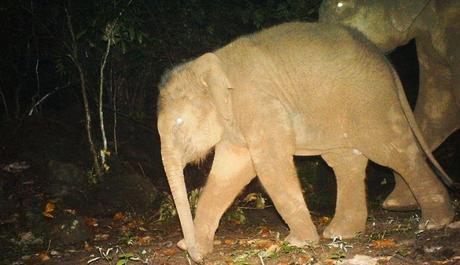It seems extraordinary: a country (India) containing 16% of humanity within less than 3% of land, but also retains – so far – the biggest populations of Asian elephants and tigers. How is that even possible? This is a fascinating question, and heres what I think: a mixture of luck, culture and laws (in no particular order).
- Socialist inefficiency – Yes, the wonders of central planning and license raj played a big role IMO! Not because leftist ideology is any more concerned with biodiversity. But simply because the public sector is less efficient at screwing up natural areas than the private sector. After all, isn’t that the whole rationale for privatising Coal India – cut down those trees and get that coal out already!
- Laws, laws laws – More than 2000 years ago, the Mauryans imposed strict penalties on anyone killing elephants because they wanted to preserve them as war animals. Multiple other rulers did similar things to preserve royal hunting. In recent history, the ground-breaking laws of the 1970’s are the foundation of biodiversity conservation in India.
- Bottom-up cultural practices – I used to take this for granted, but not any more. The philosophical acceptance that animals have an equal right to live is widespread, especially in the western and the Himalayan states, and often (not always) translates into practical results. People in North America seem to find it difficult to comprehend that trains are forced to run slow to avoid killing elephants, or that highways can be shut down at night (“But they lose money!”) – and I cant comprehend why that should be so unusual!
- Slow spread of democracy –Royal hunters became conservationists; urbanites think elephants are cute. The people who live in remote forest areas pay the price of conservation, but until recent decades they had little power or ability to oppose it. Their increasing involvement in politics has challenged the way conservation is done in India; for example, traditional forest dwellers now have greater land rights, but this also opens up the potential for more forest loss.
- A strong domestic constituency for wildlife – Despite my snarky comment above, urban Indians who think elephants are cute (and that includes me and most conservation biologists) are actually key to conservation. Domestic support is what makes conservation implementable. The effect is highly noticeable in India compared to many other important biodiversity countries. In those countries, an alarming amount of conservation seems to be driven by foreigners – which is a very bad foundation for the long term IMO.
So that’s where we are at. A mixture of both positive and negative things – strong leadership, strict laws, cultural tolerance, political inertia and socialist inefficiency – has saved wildlife so far. But all of these are fast changing now. And it is up to conservation biologists to engage with policy makers, communities, and businesses in meaningful ways to come up with new paradigms for conservation.

